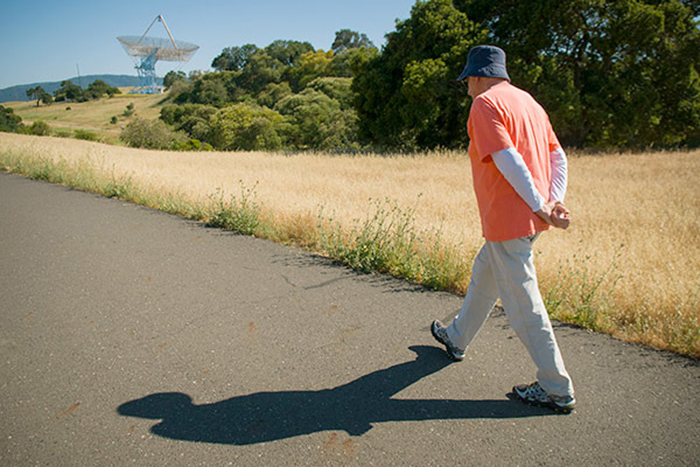Stanford researchers found that walking boosts creative inspiration. They examined creativity levels of people while they walked versus while they sat. A person’s creative output increased by an average of 60 percent when walking.
Steve Jobs, the late co-founder of Apple, was known for his walking meetings. Facebook’s Mark Zuckerberg has also been seen holding meetings on foot. And perhaps you’ve paced back and forth on occasion to drum up ideas.
A new study by Stanford researchers provides an explanation for this.
Creative thinking improves while a person is walking and shortly thereafter, according to a study co-authored by Marily Oppezzo, a Stanford doctoral graduate in educational psychology, and Daniel Schwartz, a professor at Stanford Graduate School of Education.
The study found that walking indoors or outdoors similarly boosted creative inspiration. The act of walking itself, and not the environment, was the main factor. Across the board, creativity levels were consistently and significantly higher for those walking compared to those sitting.
“Many people anecdotally claim they do their best thinking when walking. We finally may be taking a step, or two, toward discovering why,” Oppezzo and Schwartz wrote in the study published this week in the Journal of Experimental Psychology: Learning, Memory and Cognition.
Walking vs. sitting
Other research has focused on how aerobic exercise generally protects long-term cognitive function, but until now, there did not appear to be a study that specifically examined the effect of non-aerobic walking on the simultaneous creative generation of new ideas and then compared it against sitting, Oppezzo said.
A person walking indoors – on a treadmill in a room facing a blank wall – or walking outdoors in the fresh air produced twice as many creative responses compared to a person sitting down, one of the experiments found.
“I thought walking outside would blow everything out of the water, but walking on a treadmill in a small, boring room still had strong results, which surprised me,” Oppezzo said.
The study also found that creative juices continued to flow even when a person sat back down shortly after a walk.
Gauging creative thinking
The research comprised four experiments involving 176 college students and other adults who completed tasks commonly used by researchers to gauge creative thinking. Participants were placed in different conditions: walking indoors on a treadmill or sitting indoors – both facing a blank wall – and walking outdoors or sitting outdoors while being pushed in wheelchair – both along a pre-determined path on the Stanford campus. Researchers put seated participants in a wheelchair outside to present the same kind of visual movement as walking.
Different combinations, such as two consecutive seated sessions, or a walking session followed by a seated one, were also compared. The walking or sitting sessions used to measure creativity lasted anywhere from 5 to 16 minutes, depending on the tasks being tested.
Three of the experiments relied on a “divergent thinking” creativity test. Divergent thinking is a thought process or method used to generate creative ideas by exploring many possible solutions. In these experiments, participants had to think of alternate uses for a given object. They were given several sets of three objects and had four minutes to come up with as many responses as possible for each set. A response was considered novel if no other participant in the group used it. Researchers also gauged whether a response was appropriate. For example, a “tire” could not be used as a pinkie ring.
The overwhelming majority of the participants in these three experiments were more creative while walking than sitting, the study found. In one of those experiments, participants were tested indoors – first while sitting, then while walking on a treadmill. The creative output increased by an average of 60 percent when the person was walking, according to the study.
Source: Richard Dawkins Foundation
April 30, 2014
By May Wong, photo by L.A. Cicero
http://www.richarddawkins.net/news_articles/2014/4/30/stanford-study-finds-walking-improves-creativity#











